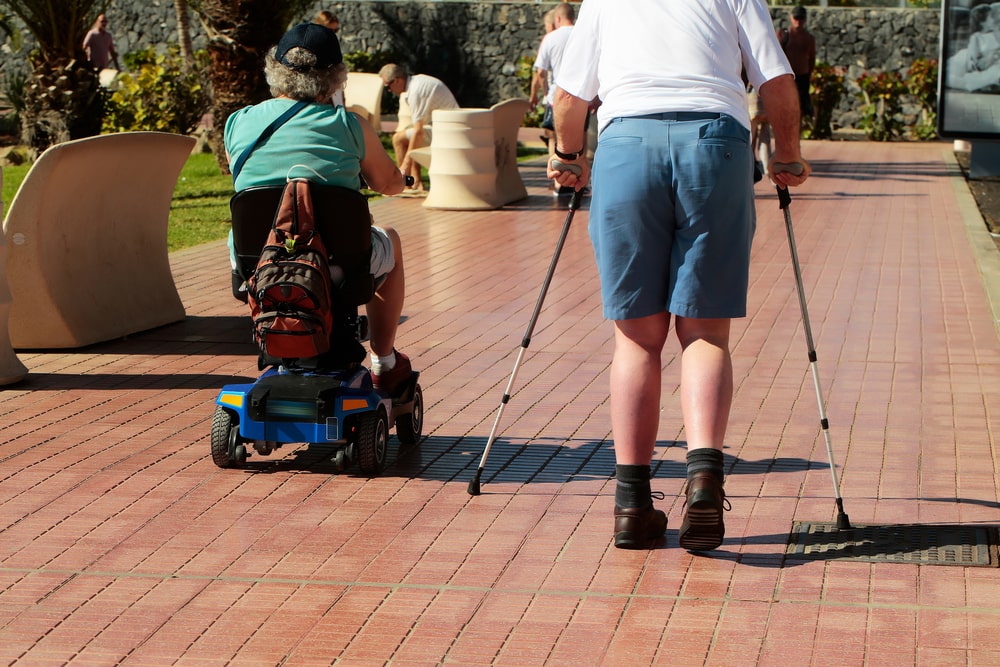The Ultimate Guide to Walking Aids: Canes, Walkers, and More
- Feb 22, 2024
- Heritage Home Medical Equipment
 Mobility challenges can significantly impact the daily lives of individuals, but with the right walking aid, independence and confidence can be restored. At Heitage Home, we understand the importance of choosing the right walking aid to suit individual needs. In this comprehensive guide, we will explore various walking aids, including canes, walkers, and more, helping our walk-in customers make informed decisions for improved mobility.
Mobility challenges can significantly impact the daily lives of individuals, but with the right walking aid, independence and confidence can be restored. At Heitage Home, we understand the importance of choosing the right walking aid to suit individual needs. In this comprehensive guide, we will explore various walking aids, including canes, walkers, and more, helping our walk-in customers make informed decisions for improved mobility.
- Canes: Canes are one of the most common and versatile walking aids available. They come in various styles, including standard, quad, and folding canes. Standard canes provide basic support, while quad canes offer increased stability with a broader base. Folding canes are convenient for travel and storage. Canes are ideal for individuals who need minimal support and are looking for a lightweight and easy-to-use walking aid.
- Walkers: Walkers, also known as Zimmer frames, provide excellent stability and support for those with balance or strength issues. They come in different types, such as standard walkers, two-wheeled walkers, and rollators. Standard walkers offer a stable frame with four legs, while two-wheeled walkers provide easier mobility. Rollators, equipped with wheels and a seat, combine support with the convenience of a built-in seat, making them suitable for longer walks.
- Crutches: Crutches are walking aids that provide support by transferring weight from the legs to the upper body. They come in various types, including forearm crutches and underarm crutches. Forearm crutches offer more wrist support and control, while underarm crutches provide stability for those with temporary injuries. Choosing the right type of crutch depends on the individual's strength, mobility, and specific requirements.
- Knee Scooters: For individuals recovering from lower leg injuries or surgeries, knee scooters offer a hands-free alternative to traditional crutches. These scooters have a comfortable padded platform to rest the injured leg while allowing users to propel themselves with the other foot. Knee scooters are an excellent choice for maintaining mobility and independence during the recovery period.
- Wheelchairs: For individuals with more significant mobility challenges, wheelchairs provide a comfortable and efficient means of transportation. Manual wheelchairs are propelled by the user or an attendant, offering flexibility and control. Electric wheelchairs are powered by batteries, providing greater independence for those with limited upper body strength.
- Choosing the Right Walking Aid: Selecting the appropriate walking aid depends on various factors, including the individual's mobility level, strength, and lifestyle. Our expert staff at Heritage Home is dedicated to helping walk-in customers make the right choice. We offer personalized assistance, ensuring that each customer leaves with a walking aid that enhances their mobility and fits seamlessly into their daily life.
In conclusion, walking aids play a pivotal role in restoring independence and confidence for individuals facing mobility challenges. From the simplicity of canes to the stability of walkers and the hands-free convenience of knee scooters, there's a walking aid for everyone. At Heritage Home, we are committed to providing a wide range of high-quality walking aids and expert guidance to ensure our walk-in customers find the perfect solution for their unique needs.